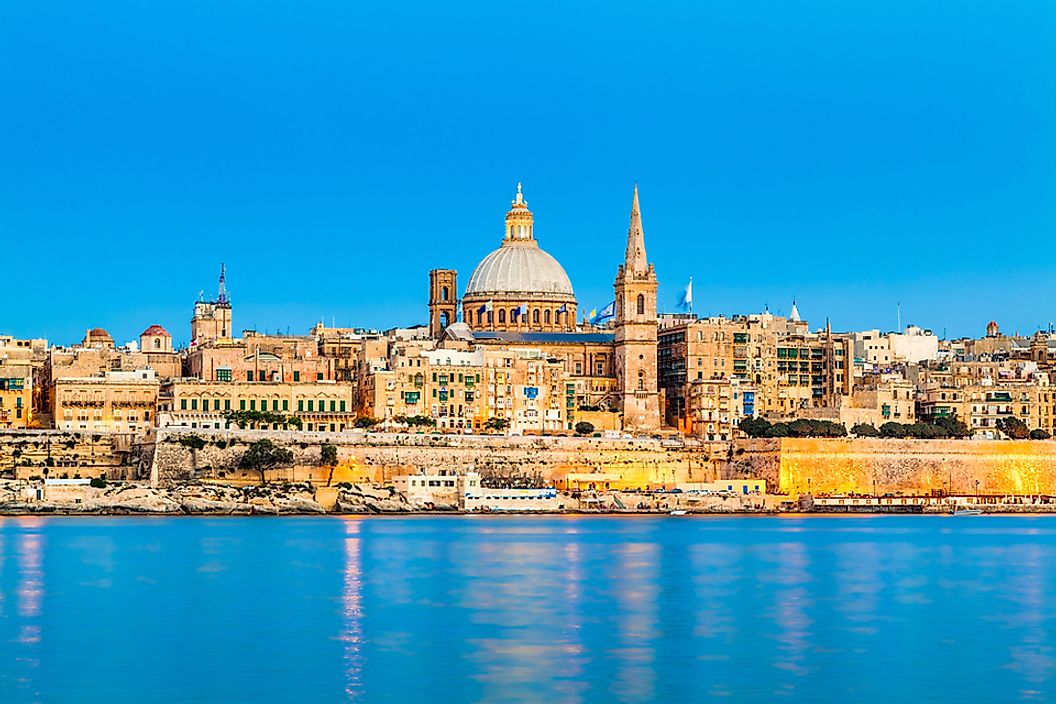What Continent Is Malta In?

Overview
Malta is an island archipelago in the Mediterranean Sea and is located in Southern Europe. It is surrounded by Italy to its north and Libya to its south. The capital of Malta is Valletta, which is the smallest capital city in the European Union. The largest city in the country is Birkirkara. The national language of Malta is Maltese, while English is the country's official language. The current president of Malta is Marie Louise Coleiro Preca, and the current prime minister is Joseph Muscat. Malta is part of the Eurozone, and therefore the official currency is the euro.
Europe, which is located in the Northern Hemisphere, is surrounded by the Atlantic Ocean to the west, the Mediterranean Sea to the south, and the Arctic Sea to the north. Politically, Europe is divided into fifty states, of which Russia is the largest. The major urban centers in Europe include Moscow, Berlin, London, Vienna, Paris, and Madrid. Europe is commonly considered the home of Western Civilization. It is in Europe that Greek philosophy, Romanticism, Renaissance Humanism, the French Enlightenment, and the Industrial Revolution first emerged. However, Europe was also responsible for the two world wars, as well as the rise of slavery and colonialism.
History of Malta
Malta was first inhabited around 5200 BC when settlers arrived from the island of Sicily. It was colonized by the Phoenicians between 800-700 BC and by the Romans from 216 BC. Control of the island shifted from the Romans to the Byzantines, and then to the Aghalabids, who were deposed by the Normans in 1091. In 1814, as part of the Treaty of Paris, Malta became a British colony. The islands gained independence from the British on September 21, 1964. George Borģ Olivier became the first prime minister, although Queen Elizabeth remained as Queen of Malta until December 13, 1974, when the country became a republic. Malta joined the European Union on May 1, 2004, and the Eurozone on January 1, 2008.
Geography
Malta lies 8 kilometers south of Sicily, across the Malta Channel. While most of country's islands are uninhabited, the largest ones, Malta, Gozo, and Comino, are inhabited. Malta has no lakes, although several rivers run through the country. The highest point in Malta is Ta’ Dmejrek, near Dingli, which rises to 253 meters. Given its Mediterranean climate, the country has mild winters and hot summers. The capital, Valetta, experiences the warmest winters of any capital city in Europe, with average temperatures between 15 and 16 degrees Celsius in the daytime, and temperatures between 9 and 10 degrees Celcius at night.
Population and Culture
According to the 2010 census, Malta has a population of 417,432 people, the majority of whom are native Maltese. There is a substantial British population on the islands, especially retirees. Women slightly outnumber men, making up 50.3% of the population. Maltese is both a national and official language of the country, while English is also an official language. A loophole in the constitution provides for the addition of Italian as an official language at a later date.











